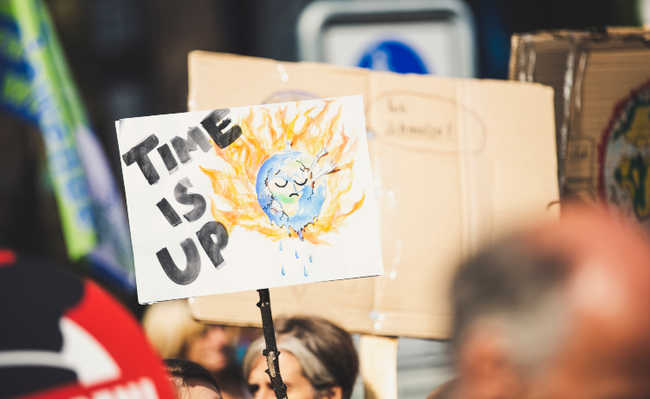What is Anxiety and Its Symptoms
Understand what anxiety is and know the main signs and symptoms of anxiety disorder

Finn image on Unsplash
Anxiety is a normal response to stressful life events such as changing jobs, financial or environmental problems. It serves to anticipate dangers and protect the body. However, when anxiety symptoms become more harmful than the events that triggered them it can be a sign of anxiety disorder. Anxiety disorder can be disabling, but it is treatable.
One of the most common symptoms of anxiety disorder is excessive worry. The worry of those suffering from anxiety disorder is disproportionate to the events that trigger worry and usually occurs in response to normal everyday situations (see study about it here: 1 ).
To be considered a sign of generalized anxiety disorder, worry must occur on most days for at least six months and be difficult to control (2). The worry must also be severe and intrusive, making it difficult to concentrate and carry out daily tasks.
People under the age of 65 are at the greatest risk of developing generalized anxiety disorder, especially those who are single and those with a lower socioeconomic status (3).
Anxiety also overloads the sympathetic nervous system. This triggers a cascade of effects throughout the body, such as a racing pulse, sweating palms, trembling hands, and a dry mouth (4). These symptoms occur because the brain believes in a danger and is preparing the body to respond to the threat. Then the body diverts blood from the digestive system to the muscles, in case the person needs to run or fight. It also increases your heart rate and intensifies your senses (5).
While these effects are useful in the case of a real threat, they can be debilitating if the fear is out of proportion to the danger. Research suggests that people with anxiety disorders are not able to reduce agitation as quickly as people without anxiety disorders, meaning they may experience the effects of anxiety for a longer period of time (6, 7).
Another symptom of anxiety is restlessness, especially in children and teenagers. A study of 128 children diagnosed with anxiety disorders found that 74% reported restlessness as one of their main symptoms of anxiety. Although restlessness does not occur in all people with anxiety, it is one of the warning signs that doctors often look for when making a diagnosis.
Many people with anxiety report having difficulty concentrating. A study of 157 children and adolescents with generalized anxiety disorder found that more than two-thirds had difficulty concentrating. Another study of 175 adults with the same disorder found that nearly 90% reported having difficulty concentrating. The worse their anxiety, the more problems they had.
Muscle tension is also associated with anxiety. But it is possible that muscle tension itself increases anxiety, and vice versa.
Sleep disorders are also strongly associated with anxiety disorders ( 20 , 21 , 22 , 23 ). Waking up in the middle of the night or having trouble sleeping are the two most commonly reported problems ( 24 ). Some research suggests that having insomnia during childhood may be linked to the development of anxiety in adulthood ( 25 ).
There is a type of anxiety disorder that is associated with recurrent panic attacks, panic disorder. Panic attacks produce an intense feeling of fear that can be debilitating. It is an extreme fear usually accompanied by tachycardia, sweating, tremors, shortness of breath, chest tightness, nausea and fear of dying or losing control ( 30 ).
- Feeling anxious or afraid of upcoming social situations
- Being concerned about the judgment of others
- Feeling afraid or ashamed of being humiliated in front of others
- Avoiding certain social events because of these fears.
- Animal Phobias: Fear of Specific Animals or Insects
- Natural Environment Phobias: Fear of natural events such as hurricanes or floods
- Blood Injection Injury Phobias: Fear of Blood, Injections, Needles or Injuries
- Situational Phobias: Fear of certain situations, such as a plane or elevator ride
- use public transport
- being in open spaces
- Being indoors
- Stand in line or in a crowd
- be out of the house alone
Feeling restless (need to move frequently) on most days for more than six months can be a sign of anxiety disorder (9).
Getting tired easily is another potential symptom of generalized anxiety disorder. This symptom may be surprising, as anxiety is commonly associated with hyperactivity or arousal. But for some people, fatigue can follow an anxiety attack, while for others, fatigue can be chronic.
It is unclear whether this fatigue is due to other common anxiety symptoms, such as insomnia or muscle tension, or whether it may be related to the hormonal effects of chronic anxiety (10). However, it is important to note that fatigue can also be a sign of depression or other medical conditions, so fatigue alone is not enough to diagnose an anxiety disorder (11).
Other studies have revealed that anxiety can affect short-term memory, which may help to explain the reduction in cognitive performance (14, 15). However, difficulty concentrating can also be a symptom of other medical conditions such as an attention deficit disorder or depression, so it is not enough evidence to diagnose an anxiety disorder.
Most people with anxiety disorders also experience excessive irritability. According to a study of more than 6,000 adults, more than 90% of people with generalized anxiety disorder reported feeling highly irritated during periods when anxiety was aggravated.
Compared to general worry people, young middle-aged adults with generalized anxiety disorder reported more than twice as much irritability in their daily lives (17).
Given that anxiety is associated with great agitation and excessive worry, it is not surprising that irritability is a common symptom.
Interestingly, treating muscle tension with muscle relaxation therapy has been shown to reduce worry in people with generalized anxiety disorder. Some studies even show that it is as effective as cognitive-behavioral therapy (18, 19).
A study that followed nearly a thousand children over 20 years found that having insomnia in childhood was linked to a 60% higher risk of developing an anxiety disorder at age 26 years. Although insomnia and anxiety are closely related, it is unclear whether insomnia contributes to anxiety, whether anxiety contributes to insomnia, or both (27, 28). What is known is that when anxiety disorder is treated, insomnia also improves (29).
Panic attacks can happen on their own, but if they happen frequently and unexpectedly, they can be a sign of panic disorder.
You may also be exhibiting signs of social anxiety disorder if:
Social anxiety disorder is very common. And social anxiety tends to develop early in life. In fact, about 50% of those who have it are diagnosed by age 11, while 80% are diagnosed by age 20 (33).
People with social anxiety can seem extremely shy and quiet in groups or when meeting new people. Although they may not appear to be distressed, they feel extreme fear and anxiety.
This distancing can sometimes make people with social anxiety appear snobby or distant, but the disorder is associated with low self-esteem, high self-criticism, and depression (34).
Extreme fears about specific things like spiders, confined spaces or heights can be a sign of a phobia.
A phobia is defined as extreme anxiety or fear of a specific object or situation. The sensation is strong enough to interfere with your ability to function normally.
Some common phobias include:
Agoraphobia is another phobia that involves the fear of:
According to the Ministry of Health, prescription drugs, psychotherapy or a combination of both can improve anxiety symptoms within a few weeks. But there are also other, more accessible ways that have the potential to contribute. Learn more about them in the article: "15 Natural Remedy Options for Anxiety".










